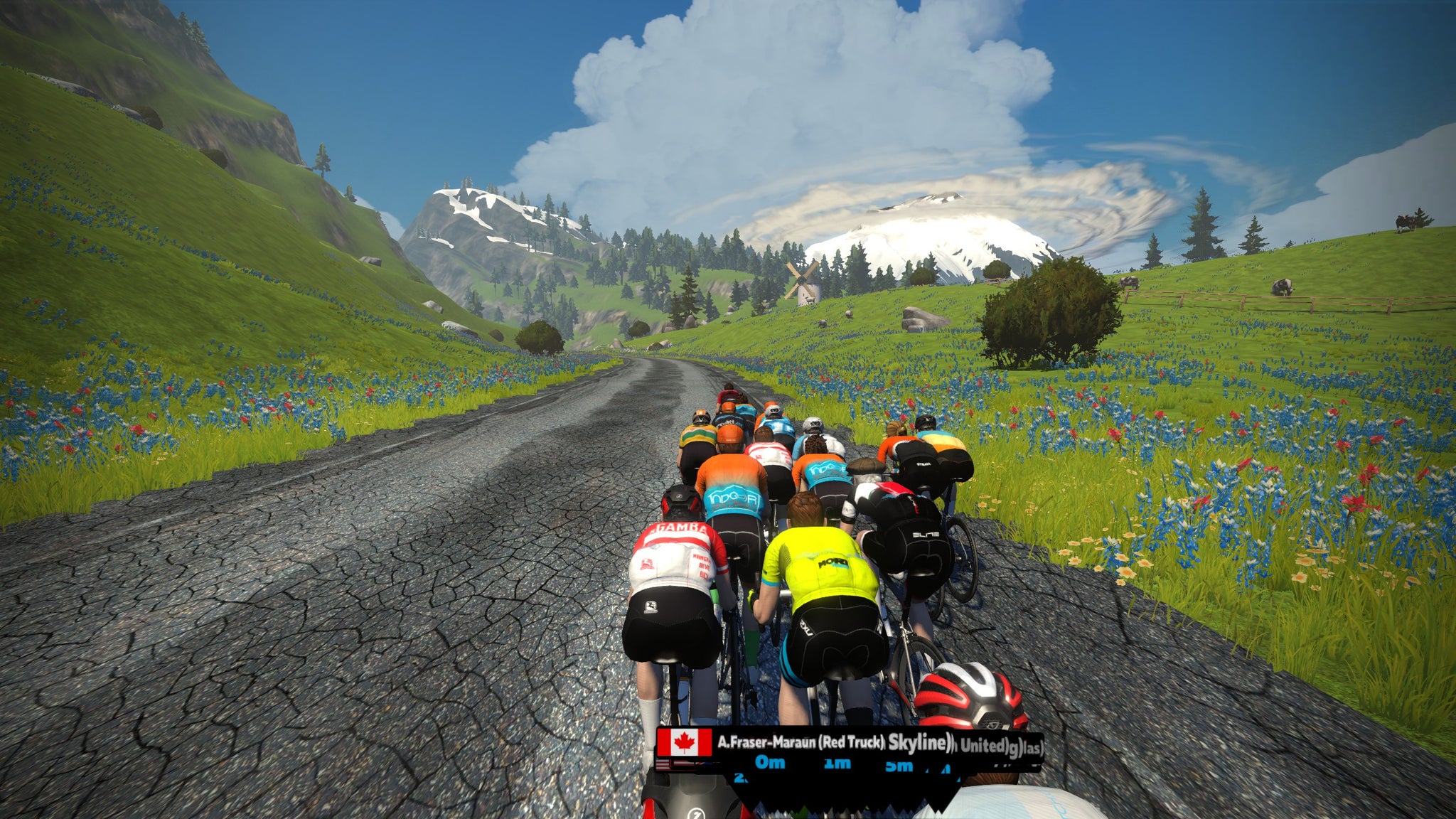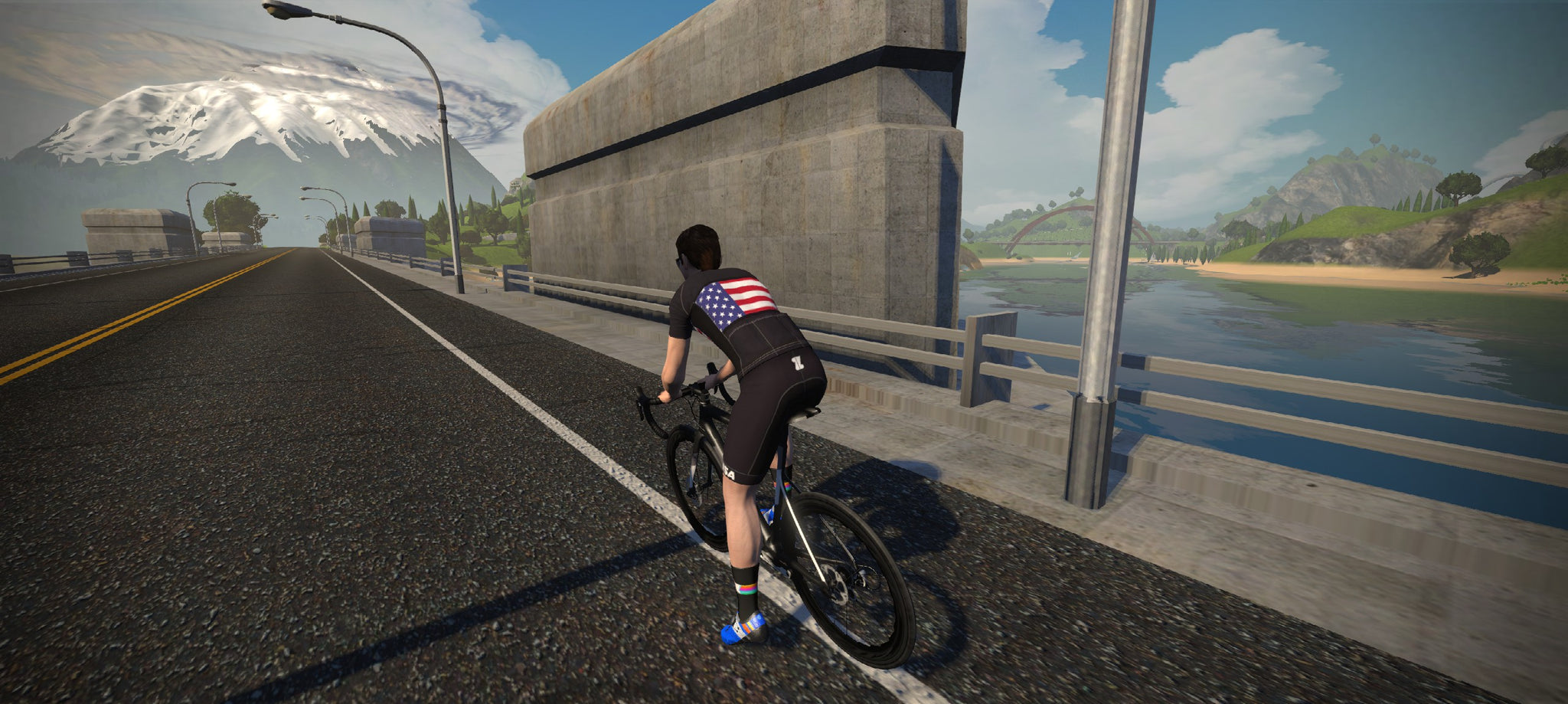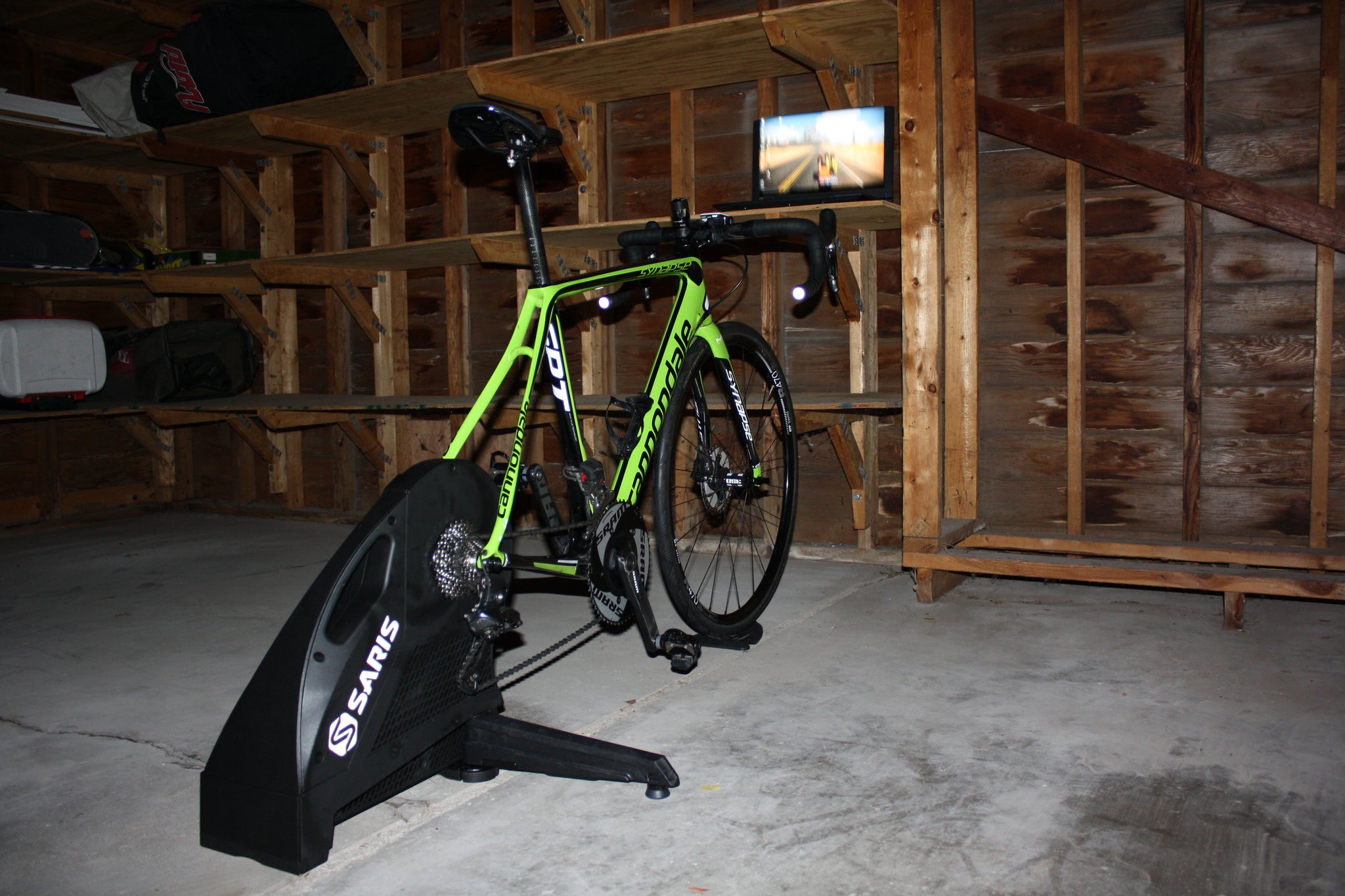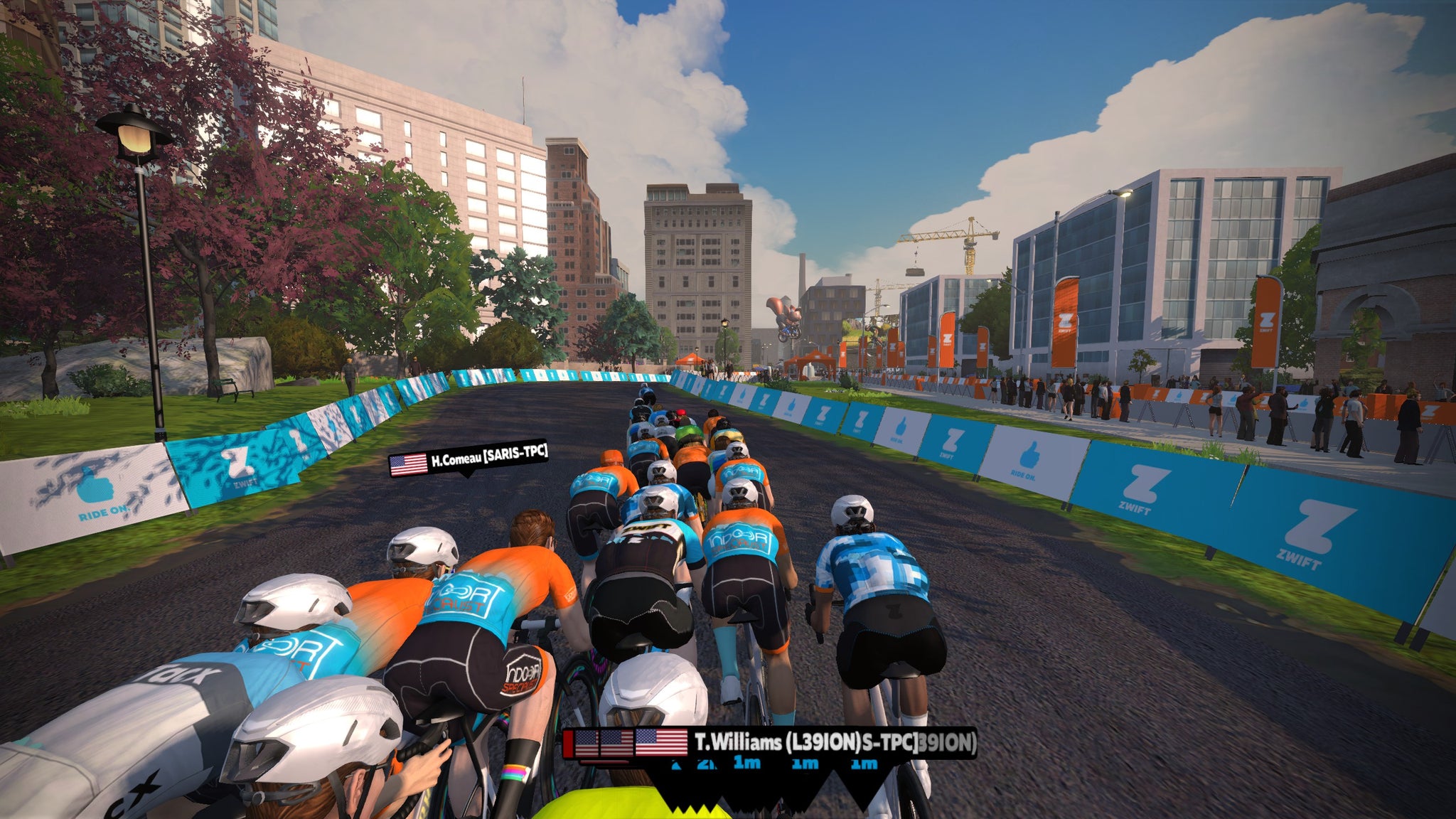The Pro's Closet is a revolutionary way to buy and sell bikes, so it only makes sense that we'd dive into the cutting-edge world of virtual cycling. We're happy to support Saris + The Pro's Closet, the world's top-ranked team on Zwift.
Hailing from four different countries, and featuring national champion Holden Comeau, this 12-rider team knows Zwift like most of us know the final climb up our driveway. With 4,800 Zwift races to their credit, these guys combine pure fitness with the experience needed to play the "game" that is online bike racing.
To learn more, we got in touch with Matt Gardiner, who co-founded the team in February 2019. Gardiner has ridden more than 50,000 kilometers on Zwift, so we knew he'd have great insight on Zwift, his team, and e-sports as a whole.
The Pro’s Closet: Let’s start with the basics: Explain what Zwift is, and what your team is all about.
Matt Gardiner: Zwift is a video game played with your legs. The best way to describe it is that your bike is your controller. That distinction is important to make. It is a game, and your bike or power meter is your controller. Learning how to control your power — in essence, your bike — is what makes you successful in the game, especially positioning — positioning is everything. The way, for instance, Holden Comeau (our team’s sprinter) rides in a race compared to myself varies a lot, because he's controlling where he is in the peloton the whole time to save energy.
As for our team, we’re just a group of individuals who are not cycling professionals. Zwift racing is a hobby we all love and are very passionate about, but it’s not our livelihood. We’re an extremely like-minded group and have slowly come together in the last few years. We are all about making this sport as fun as we possibly can. I think that makes us different from some of our competitors — especially ones who are bold enough to claim the term “pro”. At the end of the day, I know it's a video game. I can't quit my job and race it but we do approach it as seriously as a professional sport.
TPC: How did your team get started?
MG: Four or five of us were on a different team, probably one of the top teams in the game at that time, Team DRAFT. We thought it would be fun to start our own team, to have our own goals, and see what we could do. We decided to organize a few weeks before 2019 Zwift U.S. nationals, and we needed guys to race, and one of our new recruits who we asked to join us was Holden. We didn't really know him all that well. We were just a ragtag group of guys. We lined up for national championships and won — it was serendipitous! Holden Comeau wearing the Stars and Stripes jersey as Zwift national champion.
Holden Comeau wearing the Stars and Stripes jersey as Zwift national champion.
TPC: Have you guys ever met in person?
MG: I have met Holden and Matt Brandt in person. Holden has met perhaps four of our teammates, but I think that’s about the extent of it. Holden said something about this on a podcast he did recently: ‘It’s crazy. I spend the most intimate part of my day, such an intense effort, with these people I've never met.’
It may seem strange for us to have never met, but I think video games bring that out. I used to play Halo and SOCOM in high school competitively, and communities always formed organically. I always found people I clicked with who wanted to play as a team and communicate. I think that lends to why eSports is so popular globally. Anyone can get a Playstation and play. Now, Zwift is a little more complex, but it’s still a video game and its community is incredibly strong.
TPC: Was there a specific moment or race when you realized how much potential virtual racing had?
MG: Personally, I did a live event in 2018 called CVR World Cup, this company that did live events in 2018 and earlier. I flew out to Los Angeles, and I did a Zwift race in a velodrome in person. That really opened my eyes to the potential of Zwift and eSports for cycling, it was a really incredible event. I raced for maybe 100 total minutes over the two days, and I made $1,700. The live races they put on were really incredible, but CVR ended up splitting from Zwift for their own game, so the events went away.
As a team, I would say a big moment was last year when Zwift started their Pro-Am circuit of races, and we as a team were very successful. That was the first time that Zwift really showed that they were committed to making this sport happen. We raced against these professional riders and the top community racers and did quite well. After a few races, we had a look at each other and were like, ‘Holy crap we can do this!’
TPC: Your riders come from a wide range of backgrounds — triathlon, mountain biking, swimming, and even motocross and skiing. How does that translate into the world of virtual cycling?
MG: I don’t think any of us have the same background, which is kind of incredible. As far as our backgrounds and abilities go, for instance, Holden was a sprinter in high school and college in the pool. So, explosive, one-minute efforts, that kind of effort is what he trained for. I can’t just go learn to be a sprinter like Holden, He’s born to do that.
Maybe collectively, from a character standpoint, our backgrounds help us. We are more diverse than just a pure road team, guys who just ride bikes. That diversity in experience in sport takes away a lot of ego that comes in cycling. For example, Chris Beck is one of the people I've always feared the most on the bike (before becoming his teammate), but he is incredibly quiet. He’s a mountain biker and soul-rider, and a remarkable bike rider. He’s a masters XC national champ. Super-strong, but so quiet, no ego, he’ll just rip your legs off without saying a word.
I think our various backgrounds show that you don’t have to be a great cyclist to be a great Zwift racer. I don’t want to make it sound like it's not cycling because it is, but if I go to the local Tuesday night ride I can hang but I lack all the skills necessary to be successful in a road race. But I’m a strong time trialist and can suffer very hard, which is key to competing in Zwift races. It is just a different skillset and discipline.
TPC: Explain the similarities and differences between riding in real life and riding online.
MG: I’ve never done much racing outside, but in general I think it’s harder to ride on Zwift because there is no rest, you can’t freewheel behind someone. I think people fear or loathe indoor trainers because you don’t coast. That is the biggest difference. In Zwift racing, you have to time all of the efforts differently than you would outside. There’s multiple ways to pace certain climbs based on your ability. Fade climbing, for example. I know if I push really hard in the first 30 seconds on a one-minute climb I can let the pack roll by me, but outside, that move would get you dropped. This is especially true in the sprint, Holden blows through the group but you can't do that outside, you need to be positioned right, and there are no elbows to fight for position on Zwift!

TPC: Do you think we’ll start to see people come into the sport via virtual cycling and then try riding outdoors?
MG: I actually did my first road race because of my success on Zwift, but in one of the world’s shortest road racing careers, I got out of cycling because I didn't want to crash as I trained for the 70.3 World Championship. I believe as riders gain confidence through Zwift they’re more likely to venture outside for road racing. I do think that we will see this more for women’s cycling than for men’s. I think a ton of women are coming on to Zwift who might be intimidated by the local group ride because cycling is so male-dominated. Our sister team, Team Infinite p/b Saris, has generated a massive and diverse women’s community through Team Fearless. We’ve seen the same with Team DIRT (Dad’s Inside Riding Trainers) which has inspired so many dads to push their limits through Zwift racing. It’s only a matter of time before these Zwifters take their bikes outside.
TPC: Any suggestions or tips for aspiring Zwift riders or racers?
MG: There’s a lot of tips… I would say finding a team is really the key to taking the game more seriously. Find your community — it’s really hard to motivate yourself to just go race. A lot of people race by themselves, but it changes the game so much when you work with other people. That’s what the value of the game is, the community. Without other people, it's just you riding on your trainer … it's no different than staring at your wall. Holden raced for two years on Zwift by himself and our team was the first team he joined. I know for him it enabled him to race a lot differently, especially because he hadn’t tapped into the fact that he was a great sprinter. Or take my teammate David Talbott — he came from another strong team, but he’d never raced with a team together on Zwift like we do, and it allowed him to take chances and race in a totally different way than he was able to do before.
TPC: How many races do you typically do?
MG: In a week, I usually average three races. It might sound like a lot, but I frame a lot of races as training, and they’re not always max efforts. Depending on the race terrain, one might be a VO2 max-type effort, where another may be a threshold workout. Doing three high-intensity workouts in a week is not too terrible. Some guys on the team might race five or six times, but some of the races might be short. I think the duration of the average race allows you to do it nearly every day. It’s important to know the efforts aren’t always full gas. If I went all-in every day, I wouldn’t be able to do that.
 The peloton rides the Redlands Bicycle Classic earlier in 2020.
The peloton rides the Redlands Bicycle Classic earlier in 2020.TPC: You’ve got a few big races coming up, especially the Joe Martin Stage Race. STPC was really successful at the Tour of the Gila. What are your expectations?
MG: Yeah! Lots of good racing coming up. Joe Martin is over the weekend of June 19-21. The first stage of Joe Martin is an individual time trial, so it’ll be a much different GC race for us than Gila, which was a team time trial, which put our 8 guys all with a 27-second lead. The ITT for Joe Martin is on the Bologna course, which is a very technical TT which we’ve done countless times. The second stage is a 44-mile road race which should end in a sprint. Then the third race is the most brutal course in the game, the 2015 Richmond UCI Worlds course. You have to do a trio of climbs five times. Doing that sequence of climbs two times in a race makes me want to quit. Five times is going to be really, really tough.

